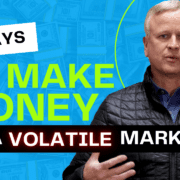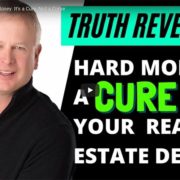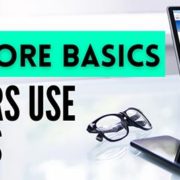How can OPM benefit your real estate investments? Here are the basics to get you started.
OPM. Other People’s REAL Money.
Not money from a broker or mortgage company or hard money lender. Money from real people to fund your flips and make your investments faster, easier, and more profitable.
OPM vs Private Money
What’s the difference between private money and Other People’s Money? Aren’t they the same thing? Yes and no. They’re related, but there are a few key differences.
Private money is often called “hard money.” It involves going through a broker or a company like Hard Money Mike that lends you private money.
OPM does the same thing, but it’s strictly peer-to-peer, person-to-person. It is private money because it’s a loan outside of a bank. It’s not hard money because you’re not going through a formal company or filling out applications.
What is OPM?
OPM is simple: one person has money and needs a smart place to put it, and one person has a promising property investment but no money to put into it. They form a peer-to-peer transaction.
Both people have the chance to benefit more than they would if they went through a bank. The person with the money gets a simple investment with typically a much higher return than the banks would pay. And the person who needs the money can get it cheaper, faster, and keep it more fluid. Both can end up more profitable and successful.
Taking the OPM route may feel non-traditional from a modern perspective, but historically, it’s the way things have always gotten done. One person has something, another person needs it, so they create a deal where they both benefit.
The Flipper’s Perspective
If you’re the flipper and you have an established relationship using OPM, funding purchases becomes simple. You find a property, and all you need to do is contact your OPM lender and give them details.
“I found a great property, but I need $100,000. We close in a week. Here’s the title company’s information. Please send the money, and we’ll get this taken care of.”
No applications, no appraisals, no middleman. It’s an easier way to borrow money, and usually less expensive than more traditional loans.
The Lender’s Perspective
If you’re the one with the money, you’re probably already looking for a smart place to put it.
Loaning the money to a flipper or other real estate investor will typically give you a better interest rate than a bond, CD, or other interaction with a bank.
How to Make It Work
It’s extremely important that OPM deals are set up to be win-win for both sides. The main reason people avoid OPM is the fear of deals going bad. This system breaks down if one side or the other feels the deal becomes unfair or unsafe.
Let’s talk about how to create a win-win environment.
Priorities for Each Side
Each party has to keep the other party’s interests in mind.
For the flipper, OPM needs to be easy, reliable, and quick. The flipper’s responsibility is to make a good and profitable deal with the other person’s money. If you do that, your OPM lender will always be there to help with your next deal. However, the second you “play games” with their money, the relationship ends, and you lose that source of fast, simple funding.
For the OPM lender, deals need to be secure and detailed. As long as their money is taken seriously, they will be there for the flipper. If you’re the OPM lender, you have to always fund a deal when you’ve agreed to. Don’t leave the flipper high and dry at the closing table.
Setting Up a Proper OPM Relationship
Using OPM may “feel” more casual, but it’s absolutely vital that you get everything in writing. Visit a lawyer, and lay out all aspects of the deal. Everyone will come out more successful if you’re diligent with this step.
Some of the things you’ll want to set up in writing are the following:
- What is the repayment schedule?
- What are the interest rates?
- How long is the loan?
- What’s the plan with the property?
The clearer, more open, and more detailed you can be with each other, the better the deal and your relationship will be.
The goal is for OPM to be mutually advantageous. People who have money want to find deals that will earn them interest. Flippers need money that flows better and is faster to qualify for. OPM is valuable, so take the time to set it up right.
Want More Details on Setting Up OPM?
Hard Money Mike doesn’t need to be involved with your OPM deals to offer help. We have resources to help you learn how to best set up OPM deals:
- What should closing look like?
- What are proper terms?
- What documents will you need?
We want to keep things flowing in the real estate community.
You can check out more great info on OPM on our Youtube channel, or download our OPM Checklist. Happy investing.










